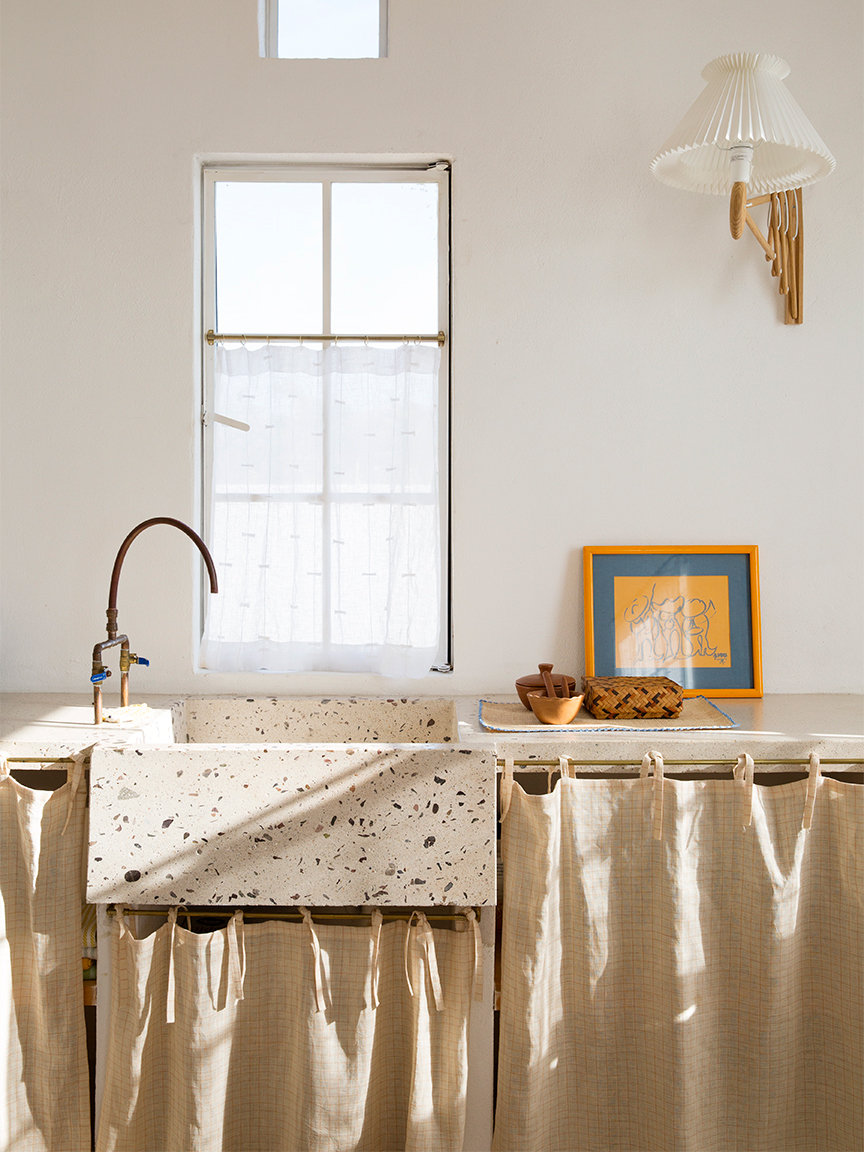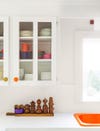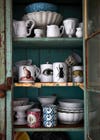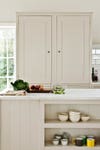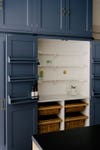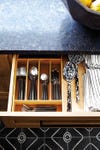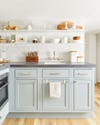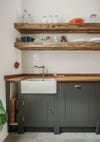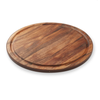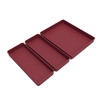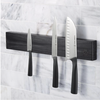Top-to-Bottom Kitchen Cabinet Storage Ideas Straight From an Expert Organizer
For every mug and plate you’ve got.
Updated Oct 12, 2018 10:37 AM
We may earn revenue from the products available on this page and participate in affiliate programs.
For hands-on advice from designers and pro DIYers, plus more scrappy before + after transformations, subscribe to Reno. Let your inbox do all the hard work—for now.
It doesn’t matter if you’re a homeowner or a renter—innovative kitchen cabinet storage ideas are essential for a space that functions as nicely as it looks on a daily basis.
“It’s all about zones,” says Los Angeles–based professional organizer Shara Kay. Consider the placement of big appliances that will always be focal points of the kitchen—the stove, the sink, the dishwasher—and organize your cupboards based on what they are nearest. After working from top to bottom on her own kitchen cabinets, Kay is full of pro-level storage tips, from lazy Susans of electronics to the reality of a junk drawer.
Upper Kitchen Cabinets
What to Keep Inside
Typically, easy-to-reach uppers are well suited for plates, bowls, and glassware. When deciding which exact cabinet to store them in, pick a place with close access to either the dishwasher or the sink so that they can be put away without doing a lap around the space. If you have room to spare, flour or spices can be safely stored here—on lower levels they can attract bugs.
How to Organize Them
According to Kay, the best approach is to make smaller groups within each cabinet. Separate stemware and drinking glasses from lesser-used martini glasses and champagne flutes, for instance, opting to put the latter on a higher shelf. “The same is true for coffee mugs. Try to place the attractive ones at the front and then the more ‘memorabilia’ ones at the back,” she says. For cupboards with plenty of vertical space, fitting everything in could mean just adding a new shelf. Most hardware stores can build you one; just bring in an example of a shelf already in the cabinet.
Kitchen Countertops
What to Keep on Them
“If you use your blender, toaster, or coffee maker every day, you can keep it on the countertop, especially if you don’t have much cabinet space,” advises Kay. Primarily, though, countertops should be clear of clutter so you have ample room to slice and dice your way to dinner. A magnetic knife rack or pegboard for hanging pans can get those everyday items off the counter surface but still within reach.
How to Organize Them
Designate a meal-prep surface that’s easy to clean up after—aka far away from the crevices between the counter and refrigerator or oven. Instead, stow larger tools or electronics, like a stand mixer, near these ledges as a preventative measure.
Kitchen Drawers
What to Keep Inside
Kitchen drawers are the storage hero for all the smaller essentials needed in a kitchen, from cutlery and plastic baggies to tinfoil and hand-washed glasses.
How to Organize Them
“Give yourself permission for a junk drawer,” says Kay. “Everyone needs stuff like pens, batteries, and tape measures. I prefer to call it the ‘command center.’ Just make sure to keep it organized.” She’s a fan of labeled inner compartments, one for each type of product, which can be put together like a puzzle to fit the drawer’s dimensions. “People will hesitate before putting binder clips where the scissors go if there’s a sticker,” she notes.
Lower Kitchen Cabinets
What to Keep Inside
Lower kitchen cabinets traditionally hold larger pots and pans or weightier tools that could be too heavy for an upper cupboard. The former can either be stacked or turned on their sides with a rack. “Kids’ things like plates, cups, or lunch boxes should be accessible in lower cabinets so that little ones can help Mom and Dad and build some independence,” adds Kay.
How to Organize Them
Putting Post-it notes inside each cabinet and drawer when loading in all the contents before move-in day will keep them organized right from the start. As soon as you pick a dish up from the box it was in, you’ll know where it goes. Baking sheets and cutting boards can easily slide into narrower compartments, while for smaller kitchen tools like graters and mortars and pestles (or anything bought through a late-night television commercial), Kay notes that lazy Susans in corner cabinets allow you to grab what you need in a snap. As your cabinets start to fill up, take a moment to declutter. If you haven’t used your Slap-Chop in the last nine years, toss it.
